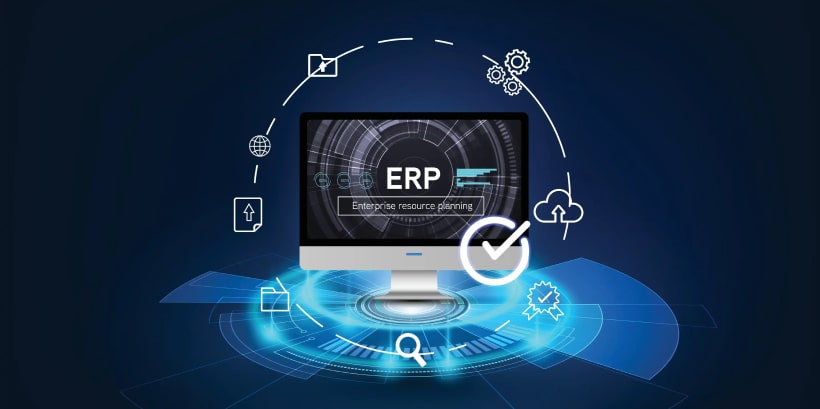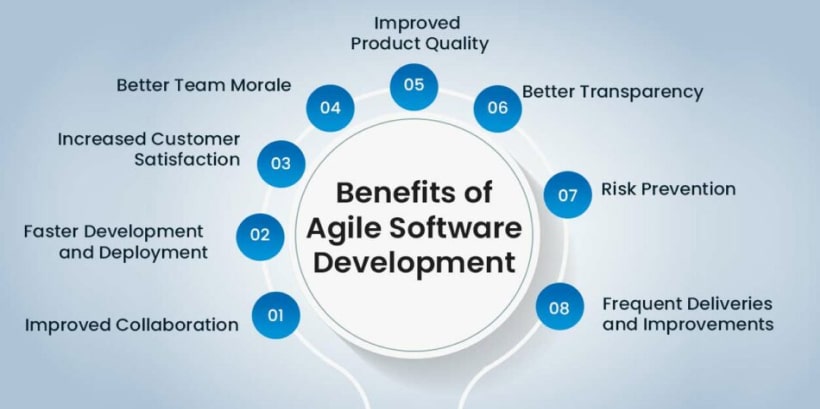What Is Software Development Lifecycle? A Complete Guide
8 MIN READIn simple terms, the Software Development Lifecycle (SDLC) is a well-structured procedure to design, develop and test good quality software. The entire process is intricately developed step-by-step with the help of SDLC methodologies.
In software engineering models, SDLC helps in outlining each stage of development. This is essential as it assists the software development model in performing its task efficiently and delivering tasks on time following a cost-efficient approach.
For a detailed idea of what is Software development Lifecycle, read this blog till the end.

Table of Contents
ToggleWhat Is a Software Development Lifecycle?

To understand what is software development lifecycle, you must know it is primarily a step-by-step framework. Developers use it to design, develop, test, and deploy software efficiently. Furthermore, it provides a systematic approach, to assist developers and businesses in planning, executing, and maintaining software with precision.
SDLC journey further includes distinct phases. These are planning, analysis, design, implementation, testing, deployment, and maintenance. Each stage has specific deliverables, ensuring the project remains on track and aligned with user needs.
Why is Software Development Life Cycle Important?
Now that you know what the Software Development life cycle is, here are a few reasons why businesses are leveraging it today.
- It enhances project management.
- SDLC ensures the timely delivery of projects.
- It also minimizes errors and improves software quality.
What are the Important Software Development Lifecycle Methodologies?

SDLC is not a uniform process for all projects. Different projects demand different software development lifecycle methodologies to achieve the best results. Following are some of the methodologies:
1. Waterfall Model
The Waterfall Model follows a linear, sequential approach. You must complete each phase before moving to the next. It works well for projects with clearly defined requirements but lacks flexibility for changes.
2. Agile Methodology

The Agile software development lifecycle is an iterative and flexible approach. Agile methodology divides projects into smaller cycles called Sprints. After each sprint, teams reassess and adapt to changes, delivering a working product incrementally. This makes Agile methodology ideal for dynamic projects with evolving requirements.
3. Spiral Model
The Spiral Model of SDLC methodologies combines iterative and sequential approaches. It involves repeated cycles of planning, risk assessment, and prototyping, making it suitable for large, complex projects.
How does the Software Development Lifecycle Work?

For a comprehensive understanding of what is Software Development Lifecycle, let’s take you through its working.
1. Planning
This is the first step of the Software Development Lifecycle. The planning stage sets the foundation for the entire project. In this phase, stakeholders define objectives, assess project feasibility, and allocate resources. A roadmap is created, outlining the timeline and goals.
2. Requirement Analysis
Requirement analysis involves gathering detailed user needs and translating them into functional and non-functional requirements. Clear documentation ensures developers and stakeholders share the same vision.
3. Design
The design phase is where technical architects create the blueprint of the software. It includes system architecture, user interfaces, database structures, and more. A robust design minimizes risks in later stages.
4. Development
At this step, coding begins. Developers write code based on the design documents. Teams may use specific programming languages and frameworks, such as working with an AngularJS development company, to ensure high performance to go ahead with the Software Development Lifecycle.
5. Testing
This is a critical step to identify bugs, ensure functionality, and verify that the software meets requirements. Tools and methods for testing developed software vary depending on the project scope and SDLC methodology.
6. Deployment
In this phase, the software goes live. Deployment strategies depend on project requirements. A PWA development company may roll out web-based software differently from traditional software.
7. Maintenance
After deployment, the software needs ongoing support. This involves fixing bugs, updating features, and optimizing performance.
Real-Life Use Cases of Software Development Life Cycle

For a better understanding of what is Software Development Lifecycle or SDLC, let’s take you through some real-life uses.
From startups to large enterprises, the Software Development Lifecycle ensures that software projects meet user needs, perform reliably, and remain cost-effective.
1. E-commerce Platforms
E-commerce businesses rely heavily on efficient, scalable, and user-friendly platforms. By adopting methodologies like the Agile software development lifecycle, developers ensure frequent updates and quick adaptation to customer demands. A Node.js developer can create a robust backend for handling high traffic. On the other hand, a ReactJS developer ensures a seamless front-end experience.
2. Customer Relationship Management (CRM) Tools
CRM tools are vital for managing customer interactions and data. Software Development Lifecycle methodologies like Waterfall or Spiral are often used to design these systems, ensuring thorough documentation and risk analysis. Furthermore, integration with frameworks like AngularJS, provided by an angular JS development company, adds value to CRM development.
3. Enterprise Resource Planning (ERP) Software

Large organizations use ERP systems to integrate and manage core business processes. Here, the software development lifecycle helps plan and execute the integration of multiple modules. Collaborating with an asp.net development company ensures secure and scalable solutions for enterprise needs.
Tools and Frameworks that Support SDLC
The right tools and frameworks can streamline the software development lifecycle and boost efficiency. Popular options include:
- AngularJS: Ideal for building dynamic web applications.

- ASP.NET: A robust choice for enterprise-level applications.

- Node.js: Best for building scalable, fast server-side applications.

- ReactJS: Perfect for creating user-friendly interfaces.

- Progressive Web Apps (PWA): These apps combine the best of web and mobile experiences.

Collaborating with a PWA development company or a framework-specific expert can help you leverage the right tools for your project.
Benefits of Agile Software Development Lifecycle

The Agile software development lifecycle is one of the most popular approaches today. It offers several benefits that make it a preferred choice for modern software projects:
- Flexibility: Agile allows changes at any stage of development.
- Customer-Centric: It involves stakeholders throughout, ensuring user needs are prioritized.
- Speed: Agile delivers functional prototypes quickly, shortening the time to market.
- Collaboration: Agile promotes teamwork and cross-functional collaboration.
- Reduced Risk: Incremental releases help identify and fix issues early.
If you are considering Agile for your project, consulting a Web development company can help you implement this methodology effectively.
Factors to Consider While Choosing the Right SDLC Methodology

To make an informed decision on what the Salesforce Development Lifecycle is and which is the right methodology for your project, you must keep certain parameters in mind.
Selecting the right SDLC methodology depends on your project’s complexity, team structure, and business goals. Here are some factors you must consider to go ahead
- Project Size For smaller projects with straightforward requirements, methodologies like Waterfall can be effective. These projects often have a clear start and finish, with minimal need for adjustments. On the other hand, larger and more complex projects benefit from iterative models like Agile or Spiral. It offers additional risk management, which is critical in large-scale software development.
- Budget and Time Constraints If your project has a limited and fixed budget, traditional models like Waterfall are more suitable. The linear nature of Waterfall ensures that resources are planned and allocated before development begins, minimizing unexpected costs. On the contrary, when it comes to flexible requirements, Agile and DevOps are better suited for projects.
- Flexibility Needs
If requirements are well-defined and unlikely to change, the Waterfall model is a reliable choice. Each phase is completed before moving to the next, ensuring a structured approach. Whereas, Agile is the go-to methodology for projects in dynamic environments where requirements can change frequently. It allows teams to pivot quickly, accommodate new features, and ensure continuous improvement. PWA development company can leverage Agile to build and enhance the application iteratively, ensuring it stays aligned with user needs while working on a PWA development project.
- Technology Stack
The technology stack used in a project can influence the choice of SDLC methodology. For instance, frameworks like NodeJS are well-suited for Agile because they enable rapid development and deployment. Similarly, tools like AngularJS often align with iterative methodologies, allowing front-end developers to quickly incorporate changes.
Therefore, we can say, each methodology has its strengths and limitations. So, carefully assess your needs to ensure success.
Bottom Line
This is everything you need to know regarding what is Software Development Lifecycle.
In a nutshell, SDLC is essential for creating reliable, high-quality software. By understanding its phases and choosing the right methodology, you can build software that aligns with your goals. Whether you adopt traditional models like Waterfall or embrace the Agile software development lifecycle, SDLC ensures a structured and successful process.
For expert guidance on software development lifecycle methodologies, connect with our team at MoreYeahs. Our expert developers shall help you turn your ideas into reality with tailored solutions for your business.
Frequently Asked Questions
SDLC is a structured process to plan, design, develop, test, deploy, and maintain software. STLC primarily focuses on systematic testing processes within SDLC to ensure software quality and functionality.
Waterfall, Agile, Iterative, Spiral, and V-Model, are the five main types of SDLC that offer unique development methodologies.
The waterfall model is the simplest SDLC model. It follows a linear path, sequential approach, and distinct phases which you must complete step-by-step.
Yes, Agile is an SDLC model that emphasizes iterative development, flexibility, collaboration, and delivering functional software in smaller, incremental cycles.
No, DevOps is not an SDLC model; it is a practice combining development and operations to enhance collaboration, automation, and delivery.
Table of Contents
ToggleContact Us
